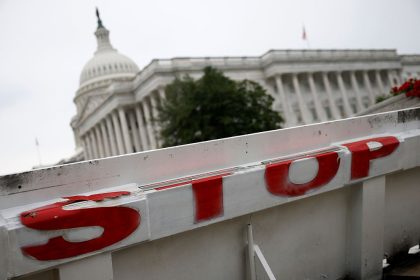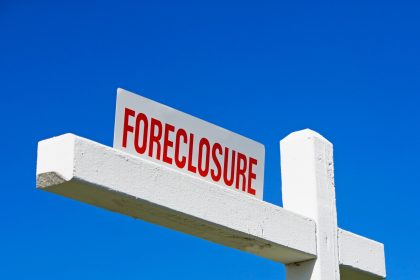For decades, the conventional wisdom about mortgage refinancing has been clear: You should swap loans only when mortgage rates have dropped a full percentage point from the rate on your original loan. However, that’s not always the case.
Should you hold off on refinancing until rates drop 1 percent?
The 1 percent advice is certainly useful as a rule of thumb, but will it guide you toward the best deal? Not necessarily.
Money tip:
“Don’t generalize. Do the math,” says Don Roberts of Johnson Financial Group.
Depending on the location of your home, the size of the mortgage and the amount of your closing costs, refinancing might still be the right call if rates drop just half a point, at least in some cases — for example, if your lender is running a promotion to reduce fees for repeat customers. Other homeowners might need savings of well more than a point to make a refinance worth their while, especially in a state with higher closing costs.
The bottom line, says Don Roberts, vice president, mortgage field manager at Johnson Financial Group in Kenosha, Wisconsin: “Don’t generalize. Do the math.”
Calculate your break-even point
Before you refinance, you should know how much it will cost you to refi, and how long it will take to recoup those costs through your new, lower monthly payments. This is known as the break-even point. Think about how long you expect to stay in the home: Bankrate’s refinance break-even calculator can help you figure out when you’ll start realizing savings.
Just as you paid closing costs when you took out your purchase mortgage, you’ll have to pay them again on the refinance. These costs typically include things like:
- Your loan’s origination fee
- An appraisal fee
- The cost of title insurance
- Any taxes collected by your state
Closing costs on a mortgage refinance can run between 2 and 5 percent of the amount you refinance. However, that can vary widely, and can also be influenced by whether the lender agrees to waive any fees on the new loan.
Another key point: Closing costs vary by state, depending on such factors as how tightly title insurance is regulated and whether the state imposes taxes on refinances. New York and Florida are two states that do: In Florida, the state collects a documentary stamp tax of 0.35 percent on mortgages, including refinances. So if you borrow $400,000, you’ll owe the state $1,400 on top of other closing costs, a charge that pushes out your break-even point.
At the opposite end of the spectrum, Roberts points out that Wisconsin’s closing costs are fixed, so a borrower there can expect to pay comparatively less for the same size loan. That’s partly because the state regulates title insurance fees, he says. Be aware of your state’s procedures so you can budget accordingly.
How to run the numbers
The higher the loan balance, the more sense a refinancing makes, because closing costs tend to be proportionately lower on higher-value loans.
Keep in mind:
Your break-even timeframe can be shorter for larger loans, because the amount saved each month is greater.
For instance, say you’ve got a $200,000 loan at 7.5 percent with a monthly principal-and-interest payment of $1,398. If rates fall to 6.5 percent, that payment drops to $1,264, a monthly savings of $134. Assuming closing costs of $5,000, you’d need 37 months to break even.
Now let’s run the same numbers with a $600,000 loan. At 7.5 percent, the monthly payment is $4,195, but at 6.5 percent, it drops to $3,792, a much bigger monthly savings of $403. With closing costs of $5,000, in this scenario you’d need just 12 months to break even.
What if rates dropped just half a point? In that case, the $200,000 loan at 7 percent would cost $1,331 a month, a savings of $67. Breaking even on $5,000 in closing costs here would take 75 months, too long to be worth the effort. But a $600,000 loan at 7 percent would cost $3,992, a savings of $203. Break-even there is 25 months, so perhaps it would be worthwhile.
| Loan amount | Interest rate drop | Monthly savings | Break-even point |
| $200,000 | 1% (7.5% to 6.5%) | $134 | 37 months |
| $200,000 | 0.5% (7.5% to 7%) | $67 | 75 months |
| $600,000 | 1% (7.5% to 6.5%) | $403 | 12 months |
| $600,000 | 0.5% (7.5% to 7%) | $203 | 25 months |
Some lenders offer refi deals
Some mortgage lenders are marketing loans that encourage refinancing by sharply reducing closing costs for existing customers. For instance, Better Mortgage’s Better Forever loyalty program waives most fees for current Better borrowers who refinance with the lender. That includes the usual $995 origination fee, and it also encompasses title insurance costs. (Both Better and United Wholesale Mortgage participate in Fannie Mae’s title insurance waiver program, which allows certain borrowers to swap loans without paying for title insurance again.) What’s more, many refinancing buyers are granted appraisal waivers, cutting an additional $500 or so from the tab for closing costs. All in all, it equates to a savings of about $1,500, says Better CEO Vishal Garg.
Before you choose a lender to refinance with, be sure to shop around to determine who can offer the best rates and terms. And take Roberts’ advice: Do the math. You don’t want any last minute surprises.
Why we ask for feedback
Your feedback helps us improve our content and services. It takes less than a minute to
complete.
Your responses are anonymous and will only be used for improving our website.
Help us improve our content
Read the full article here
















